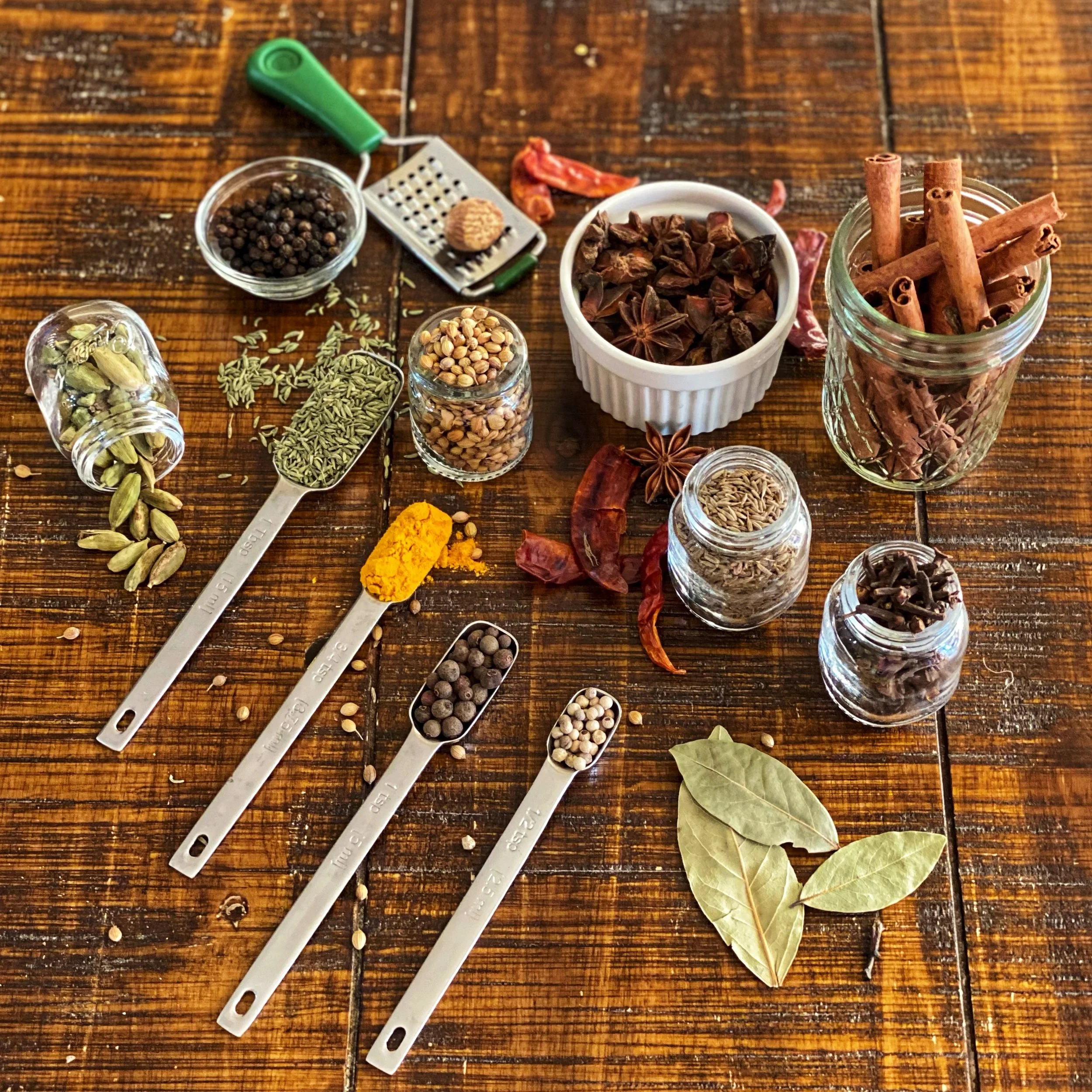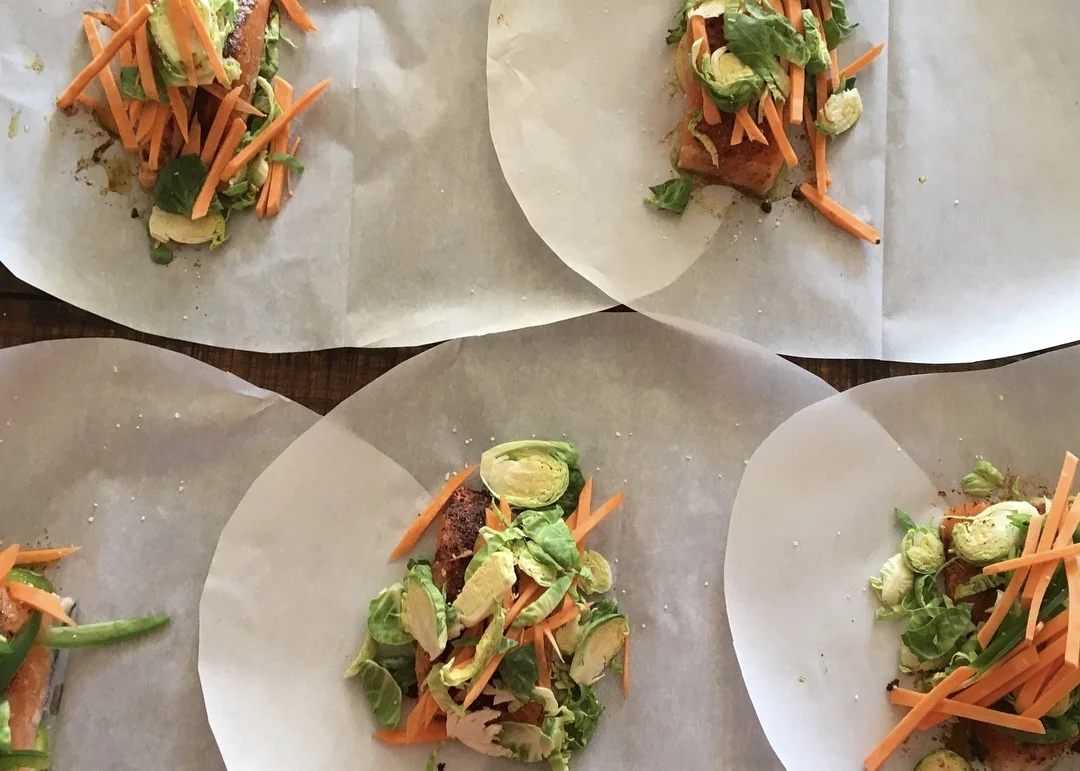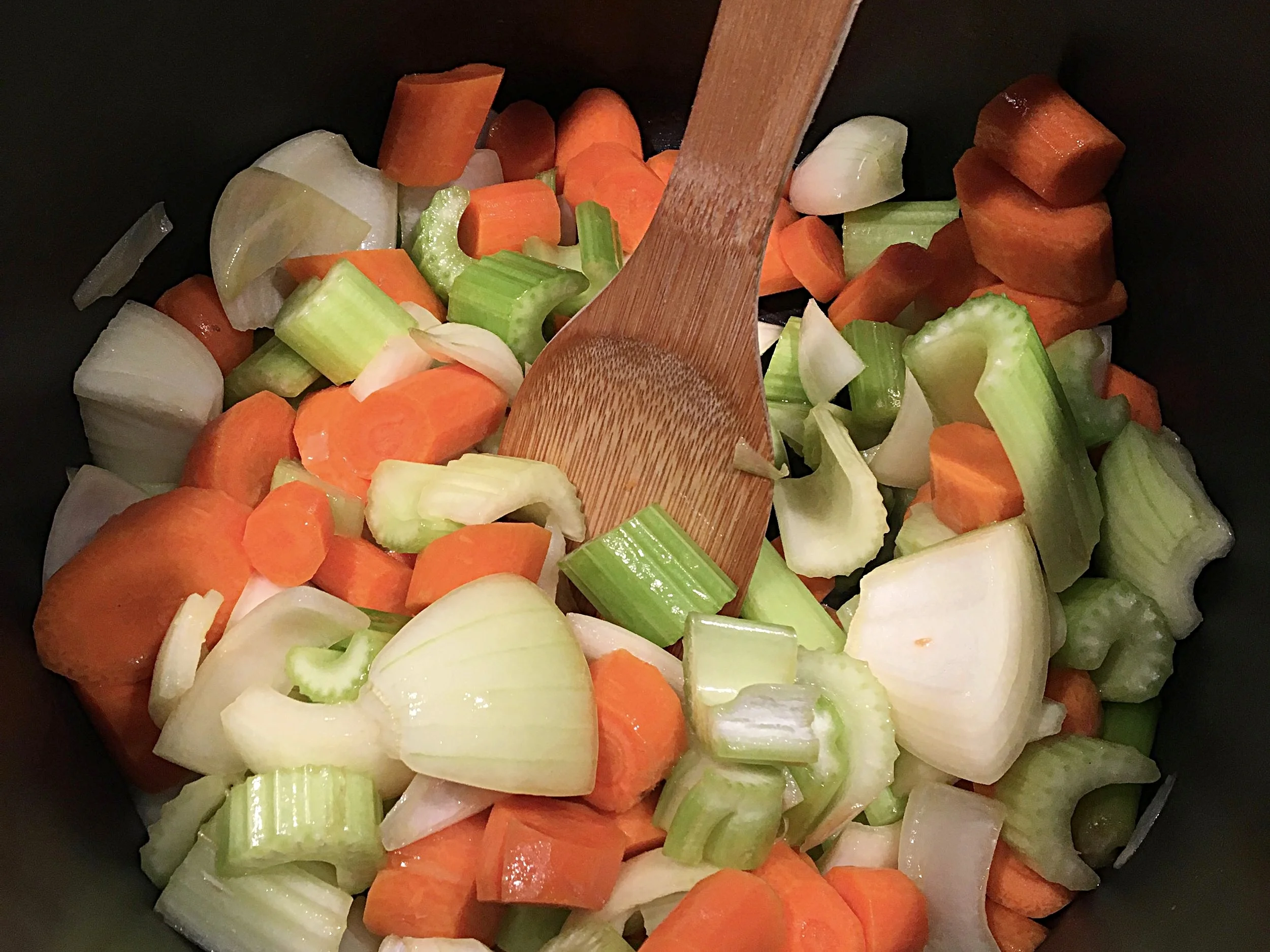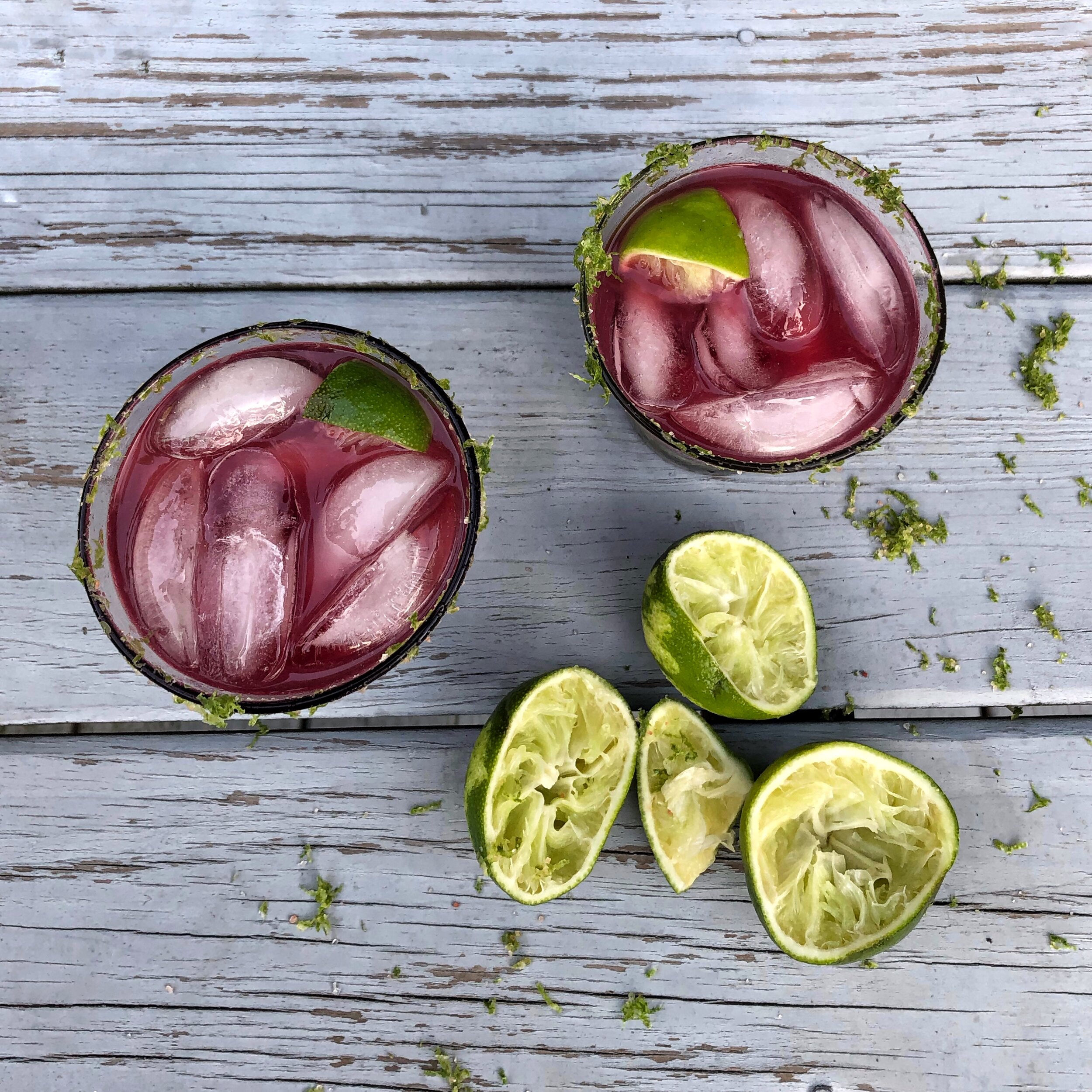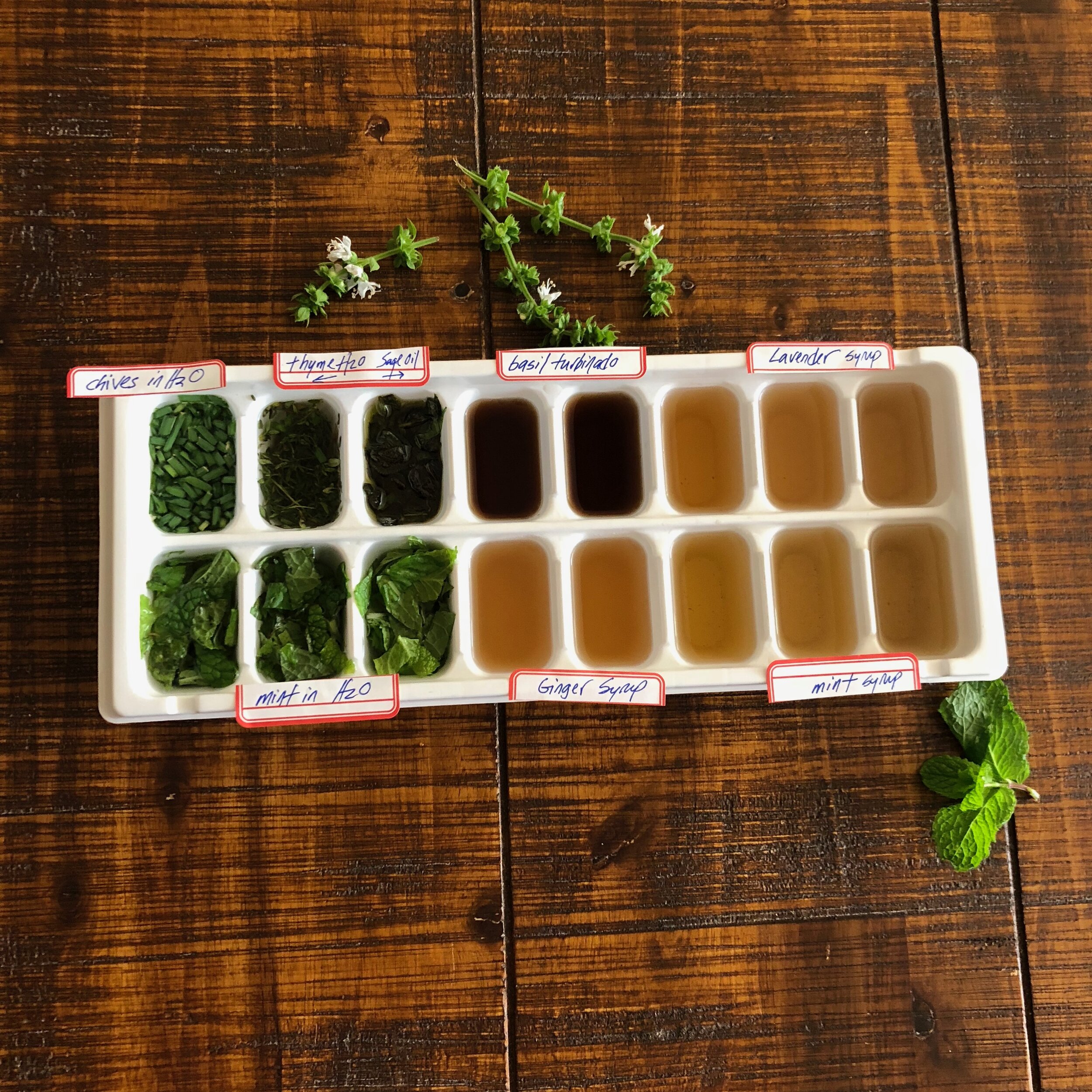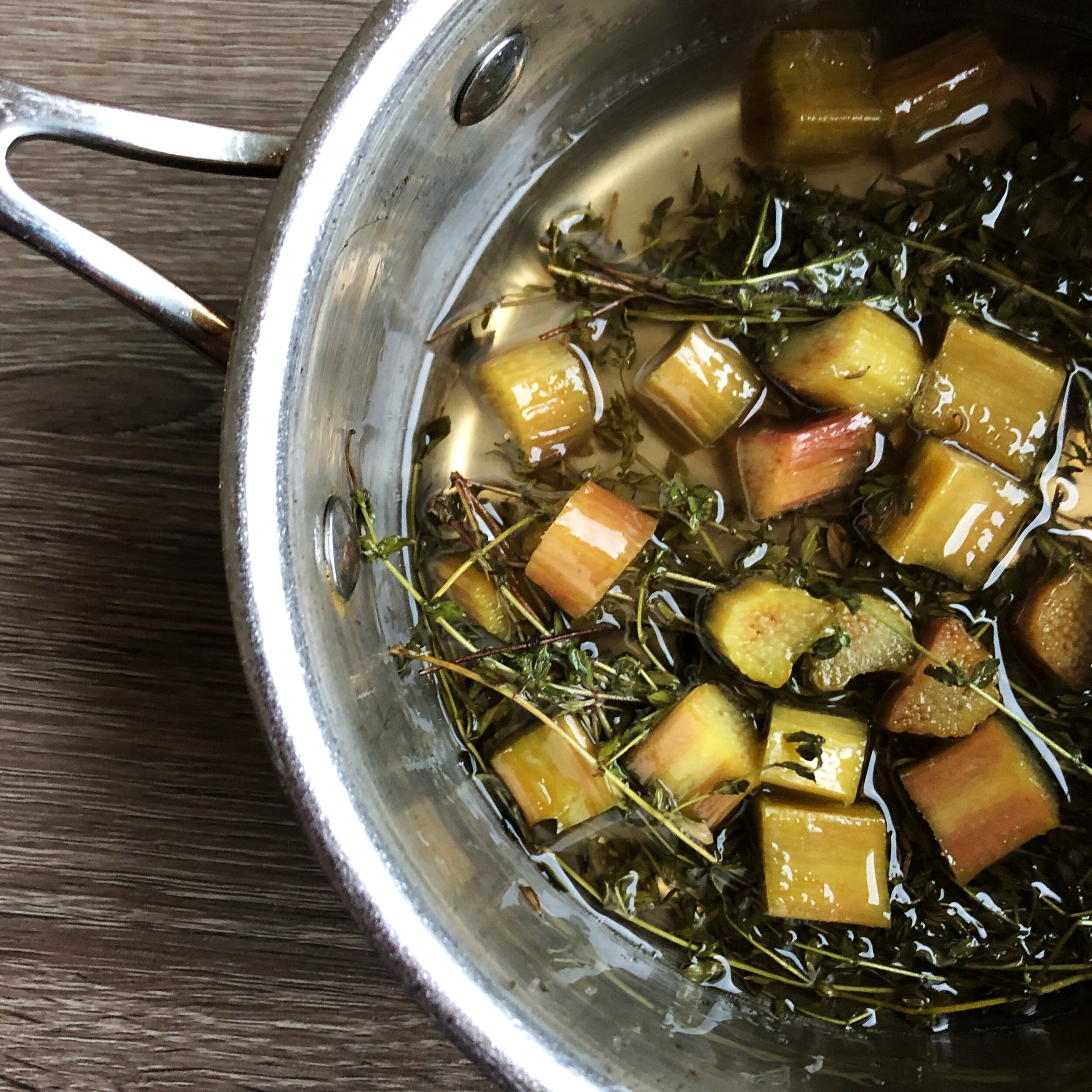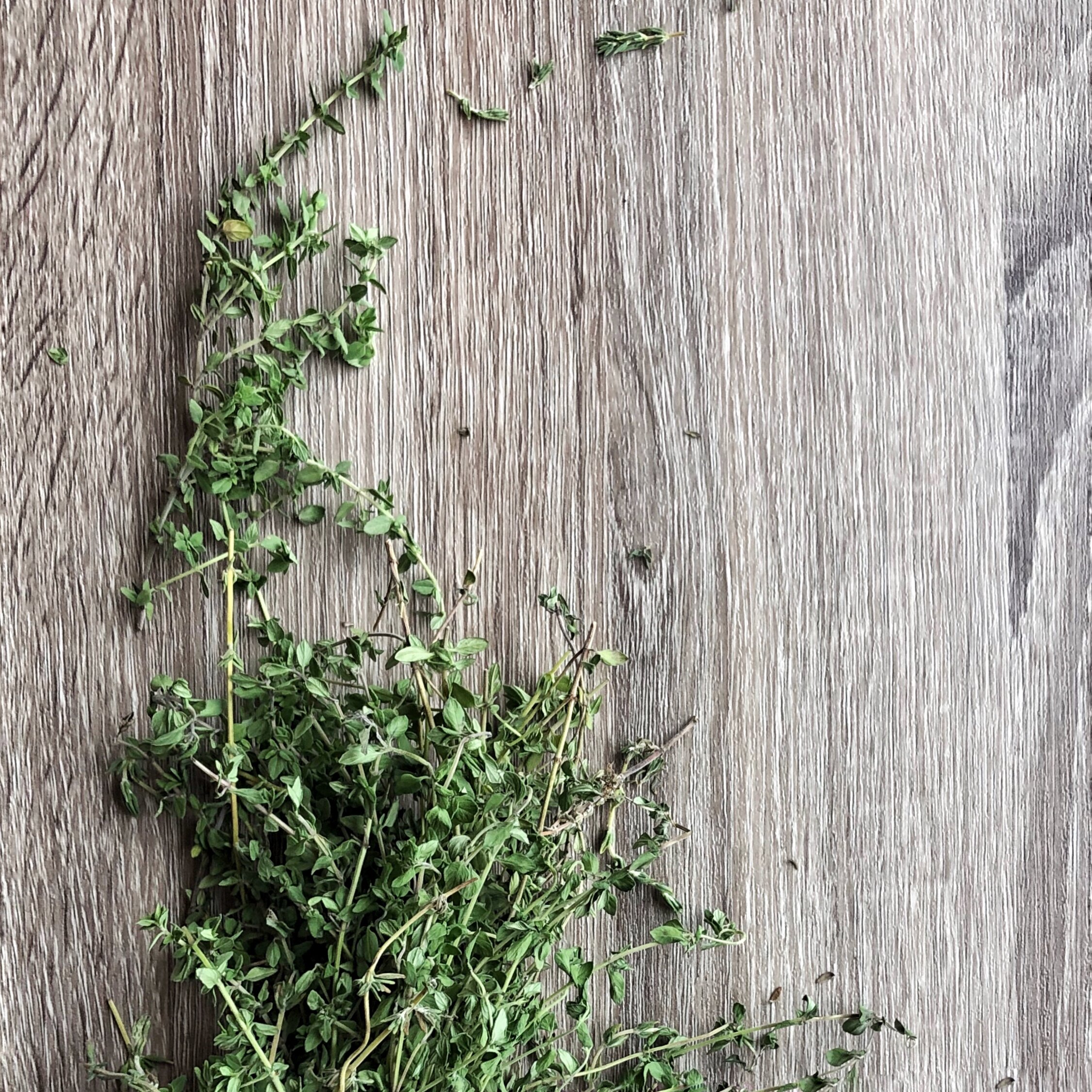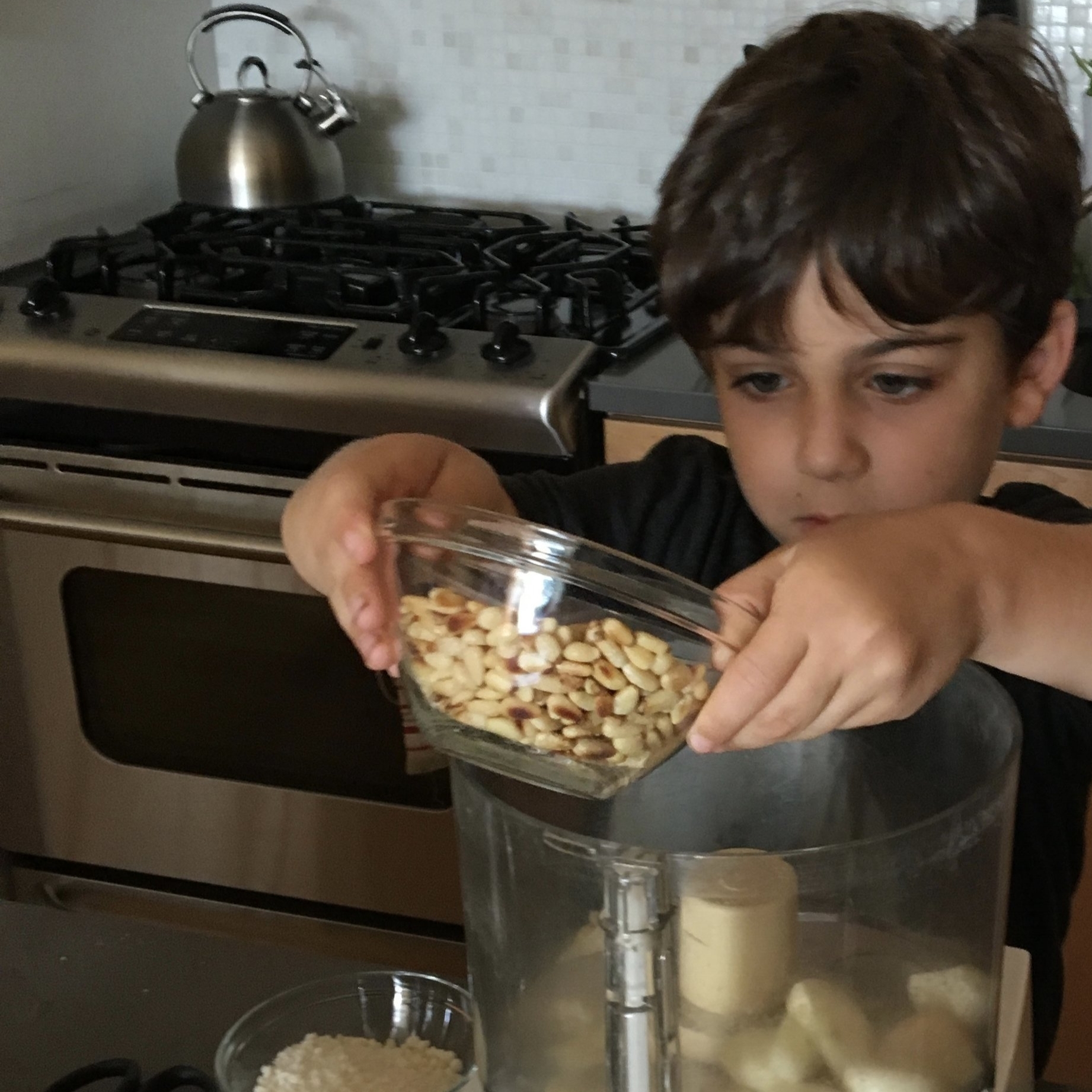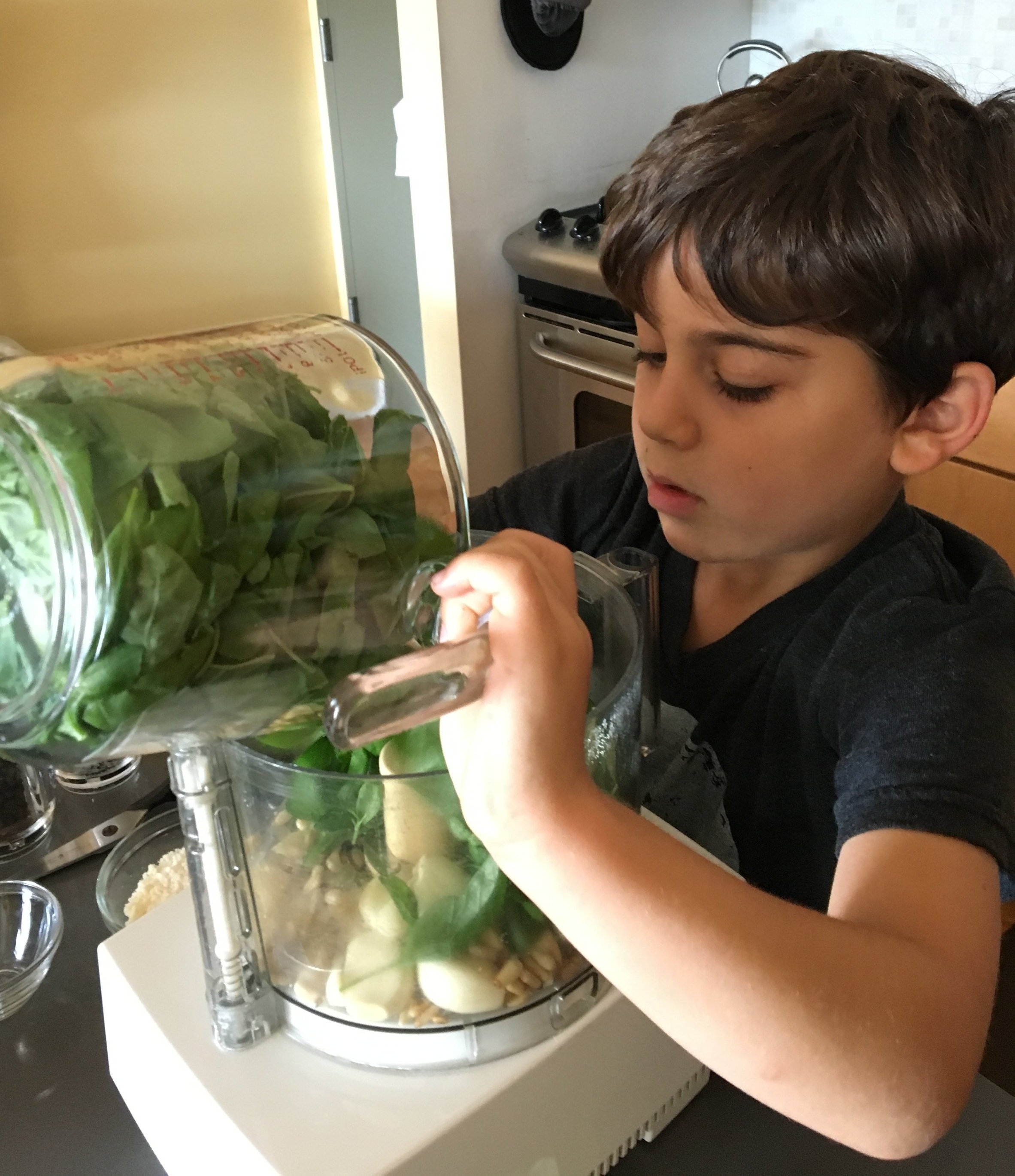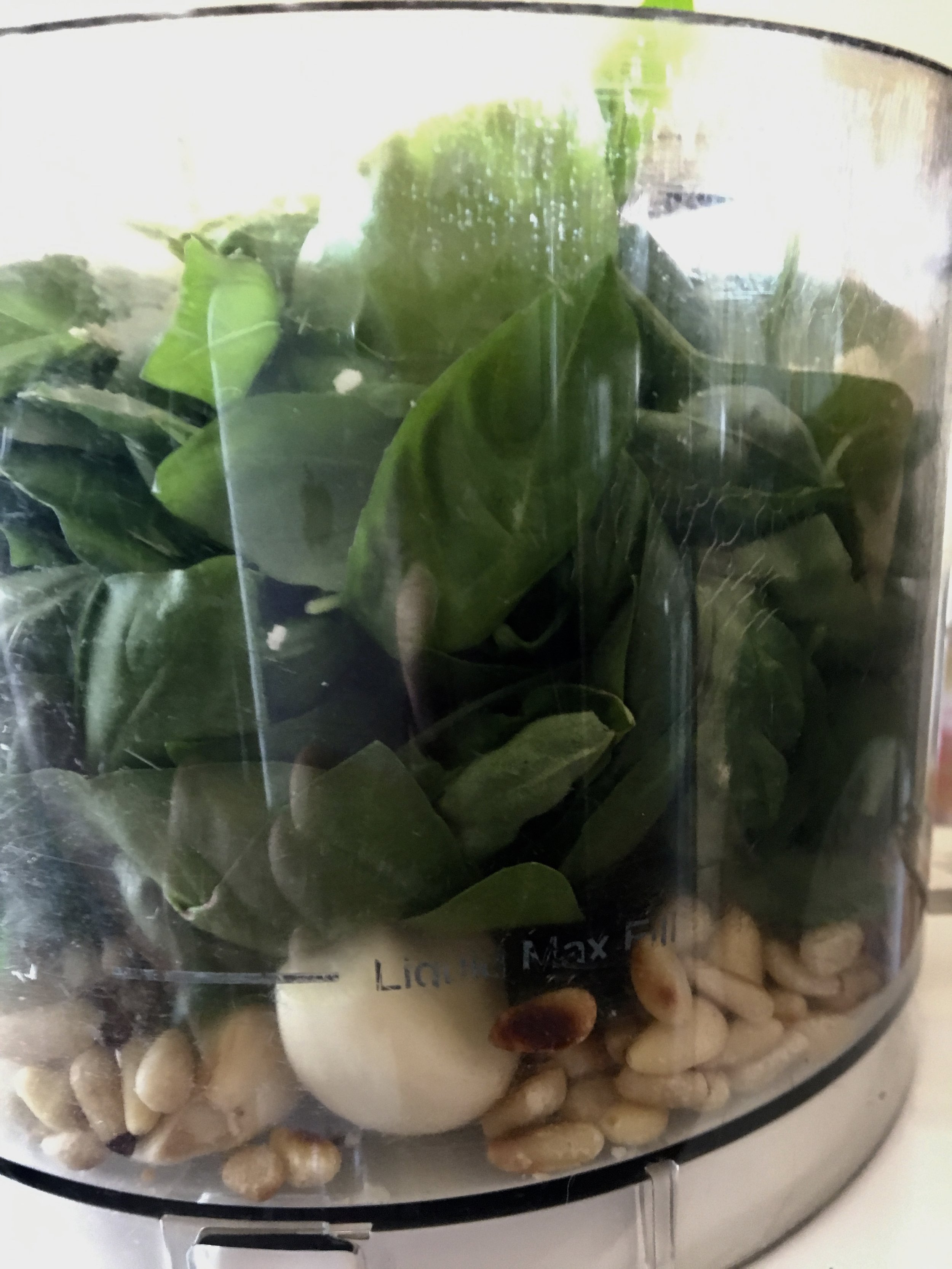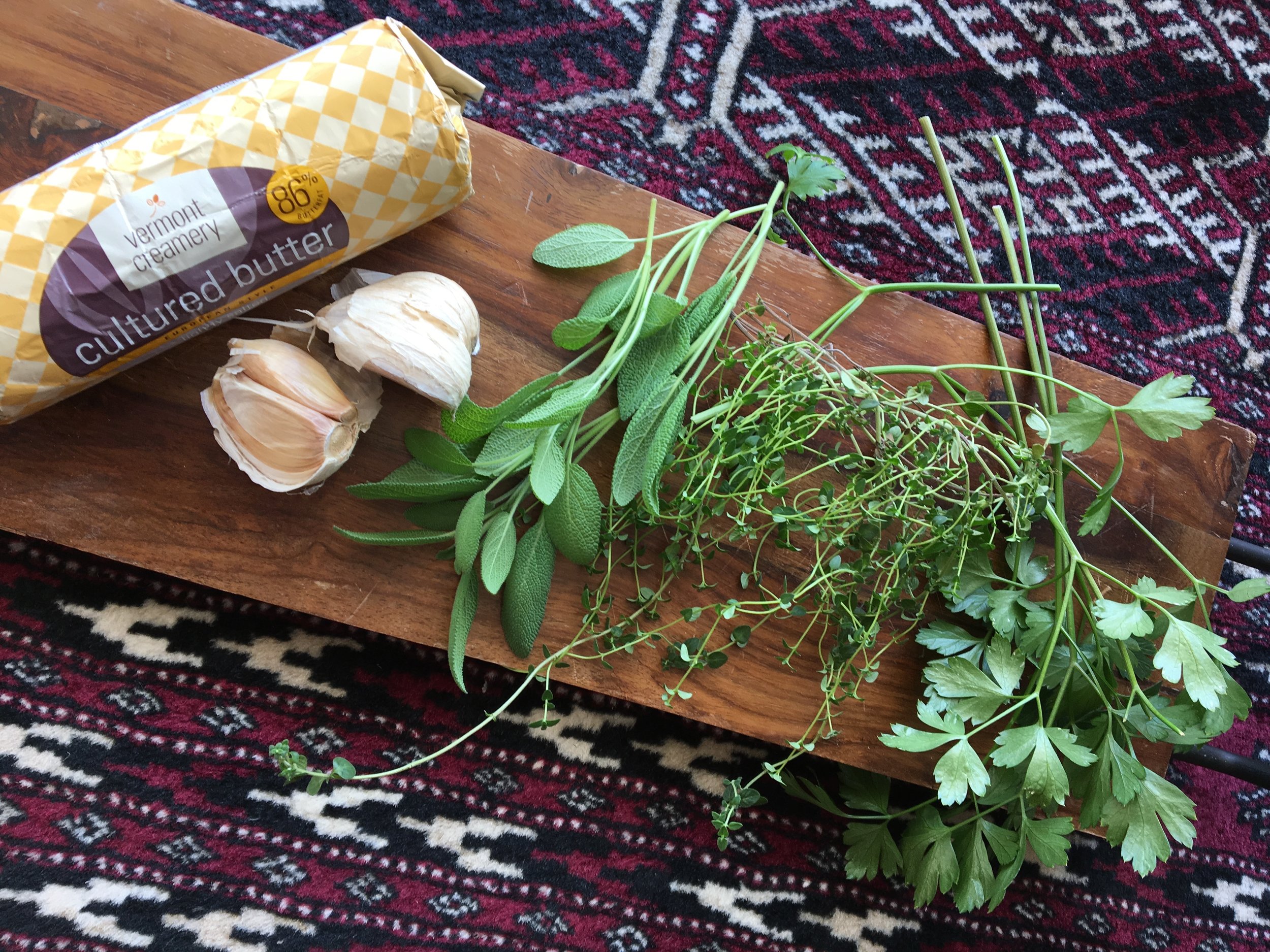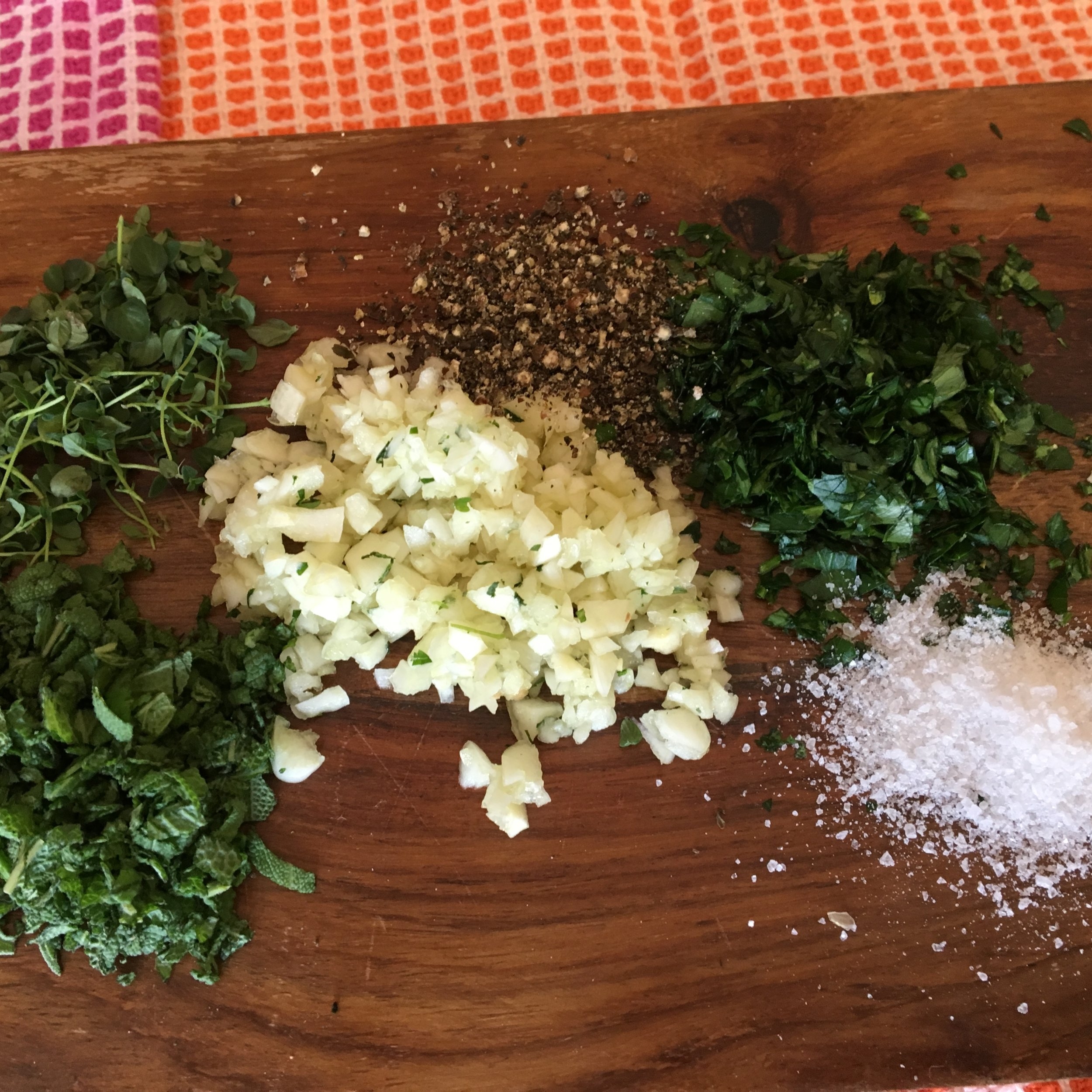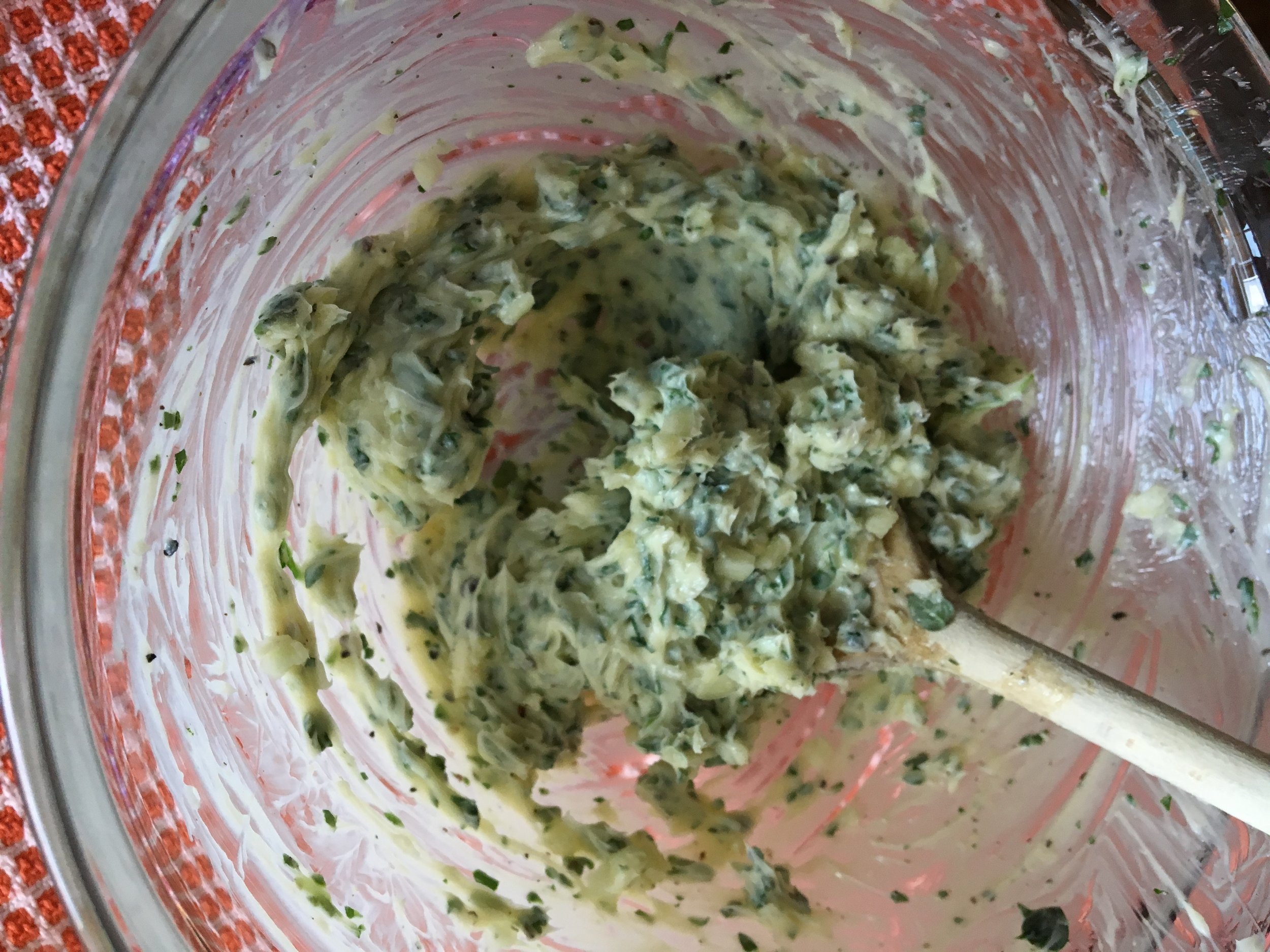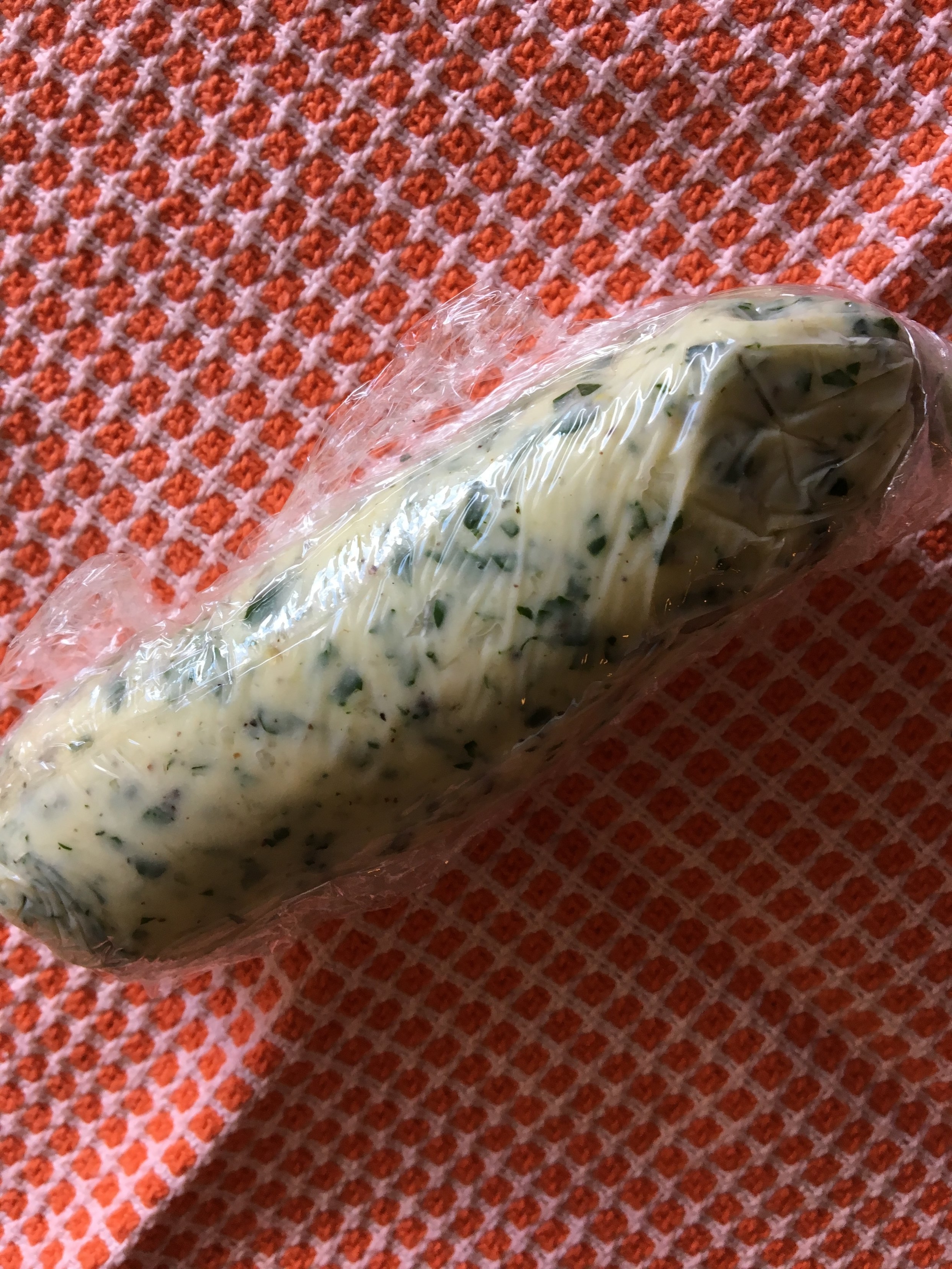Wait! Stop! Despite what you’ve been told, you should not wrap your freshly harvested herbs in paper towels and store them in your freezer for future use. Let’s be real, you won’t use them. The future leaves, brittle and flavorless, won’t resemble the fresh greenery they once were, and this is a tremendous waste of paper towels, plastic bags and freezer space! Transform those herbs into something that is preservable, portable and ripe with many uses. Some typical creations include pesto, chimichurri, salad dressings and marinades, but have you tried herb infused syrups for use in cocktails, mocktails or baked goods? This recipe requires only about 5 minutes of active time, 3 ingredients [including water] and produces something with countless uses that lasts for months.
Herb Infused Simple Syrups
Yield: 1 cup syrup
What You Need:
½ cup sugar
¾ cup water
1 loosely packed cup of leaves of mild herbs such as mint, thyme, and basil or ½ cup stronger herbs such as rosemary, lavender and sage
What You Do:
In a small pot, combine sugar and water. Over high heat, stir until sugar dissolves. Add the herb leaves and bring to a boil.
Remove from heat and allow herbs to steep and cool for about 30 minutes.
Strain through a fine mesh strainer. Discard the solids.
Note: For a more concentrated, thicker syrup to use in or on baked goods in place of corn syrup, maple syrup or honey, return to stove. Heat on medium high for 5 minutes until reduced and syrupy.
To freeze: Transfer to small jars or plastic containers with tightly fitting lids. Due to the sugar content, the liquid will not freeze completely solid. You can freeze in ice cube trays and then transfer to plastic bags, but beware that cubes will remain slightly soft. Use within 6 months.
Variations:
Ginger Syrup - Use ½ cup sliced ginger root instead of herbs or in combination with herbs to make ginger syrup. Ginger + Mint is particularly nice.
Rhubarb Syrup - Add one stalk of rhubarb, cut into 1 inch chunks. Rhubarb + Thyme is a great pairing.
Citrus Syrup - In place of some of the water, use ¼ cup orange juice or 2 tablespoons lemon juice. You should still have ¾ cup total liquid. Sage + Orange is a great combination. Lemon + Lavender is another.


